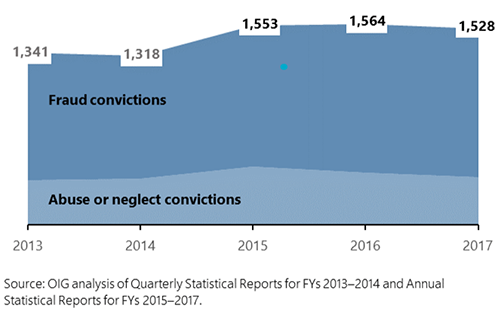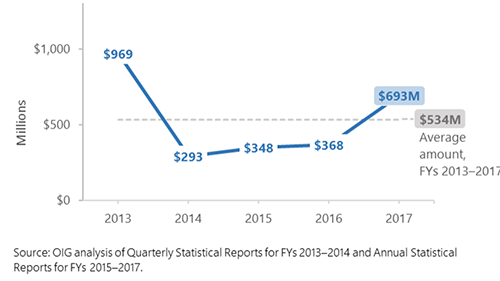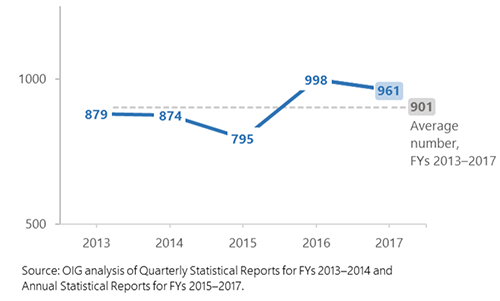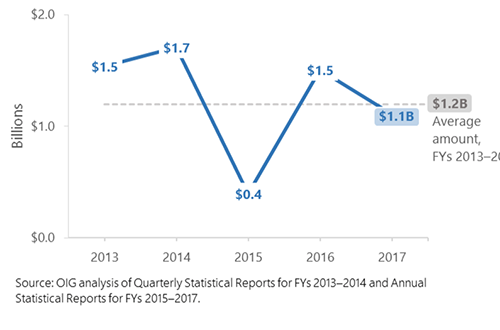Brief Your CEO: Medicaid Enforcement Trends & Their Impact on Labs
From - G2 Compliance Advisor While they do not have to embroil themselves in the day-to-day compliance program details, the C-Suiters do need to be on top of… . . . read more

While they do not have to embroil themselves in the day-to-day compliance program details, the C-Suiters do need to be on top of general health care enforcement trends affecting your lab. OIG reports are an excellent source of data necessary to monitor these trends. And, as compliance officer, you can score a whole lot of respect and appreciation points with the lab executives by tracking down and analyzing the OIG data for them so they don’t need to do it themselves. The OIG’s newly published annual summary of Medicaid Fraud Control Unit (MCFU) activity for FY 2017 should be right at the top of your briefing agenda. Here is a summary of the report’s key findings, trends and impact on labs to relay to the executives.
Background
Start by explaining that the 50 MCFUs are essentially the state arm of the OIG in charge of investigating and prosecuting provider Medicaid fraud and patient abuse violations. Each year, the OIG issues a report documenting aggregate MCFU case outcomes for the prior year including convictions, civil settlements, judgments and recoveries. The April report summarizes the results of FY 2017.
Criminal Convictions
Start with any executive’s biggest fear: the risk of criminal conviction. Note that at 1,528, total MCFU convictions have remained flat not just year-to-year but over a five-year period. Acknowledge that, like the other outcomes, criminal convictions include both fraud and patient abuse but point out that the former generally outnumber the latter at a 3-to-1 clip. Thus, fraud accounted for 73% of all convictions in 2017. Use Table 1 as a visual.
Table 1: MCFU Convictions FY 2013-2017

Of course, your executives will want a breakdown for the labs segment. So point out that of last year’s 1,157 fraud convictions, 523 (45%) involved personal care service (PSC) attendants and agencies, by far the highest of any provider group, followed by nurses (88), home health agencies (54) and family practice physicians (36).
Labs were down on the list, accounting for only 12 convictions (8 clinical labs and 4 radiology and physiology labs).
Criminal Recoveries
While the number of convictions was consistent with previous years, criminal recoveries were $693 million, nearly double FY 2016 levels. The point, i.e., that criminal penalties are increasing at a scary level, is one you need to ensure is not lost on your own executives.
Table 2: MCFU Criminal Recoveries FY 2013-2017

Note that the numbers are a bit anomalous to the extent that most of this money—about $519 million—came from one big case in Texas involving a doctor and other codefendants who defrauded Medicaid and Medicare by improperly recruiting individuals and falsifying medical documents.
Labs contributed roughly $5.443 million to total criminal recoveries with $3.396 coming from the 8 convicted clinical labs and the remaining $2.047 million from the 4 convicted radiology and physiology labs.
Civil Settlements & Judgments
Next, move over to the civil side of enforcement. Note that in 2017, the number of civil settlements and judgments was slightly down at 961 and that these totals are very much in line with recent trends, as illustrated by Table 3.
Table 3: MCFU Civil Settlements & Judgments FY 2013-2017

Point out that pharmaceutical makers was the segment with the most settlements and judgements in with 426 (44%) followed by pharmacies (137), DME suppliers (37), PCS attendants and agencies (34) and medical device makers (28).
Labs accounted for 10 settlements and judgments, 8 involving clinical labs and 2 involving radiology and physiology labs.
Civil Recoveries
Unlike the criminal side where the decline in convictions belied the spike in recoveries, civil recoveries actually mirrored the decrease in settlements and judgments dipping to $1.1 billion, as compared to $1.5 billion in FY 2016 and below the annual $1.2 billion average during the overall five-year period.
Table 4: MCFU Civil Recoveries FY 2013-2017

Labs paid out just over $13 million in civil recoveries, with 8 clinical labs contributing roughly $6.268 million and 2 radiology and physiology labs another $6.750 million.
Takeaway: Sum up by explaining that Medicaid fraud enforcement at the MCFU level remains steady and even in modest decline. And while labs are still drawing attention, they appear to be becoming a relatively marginal target as MCFUs focus more on the PCS and pharmaceutical sector. However, you might want to suggest that the opioid imperative is likely to turn those trends around given the lab’s role in urine drug testing.
Subscribe to view Essential
Start a Free Trial for immediate access to this article